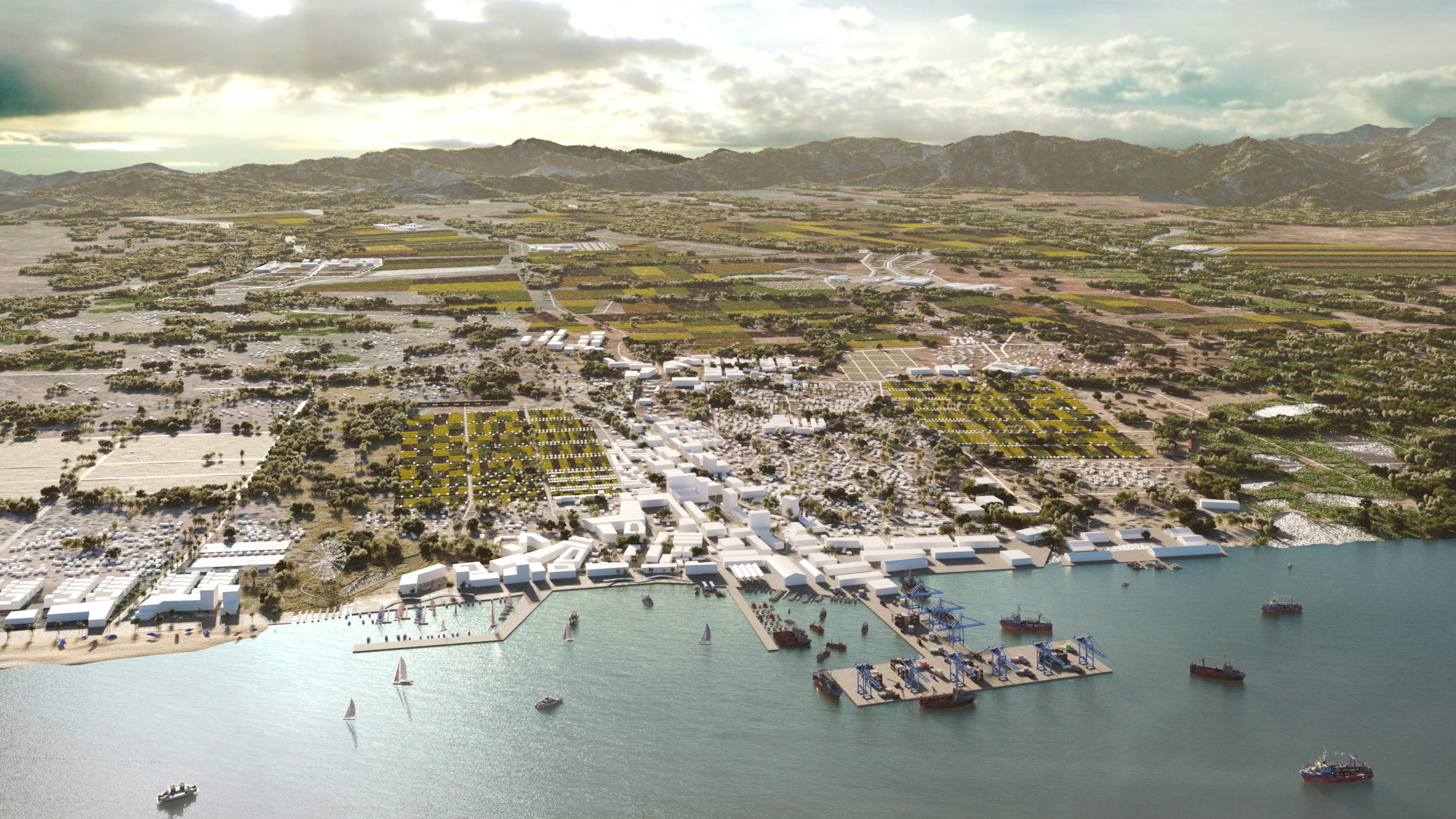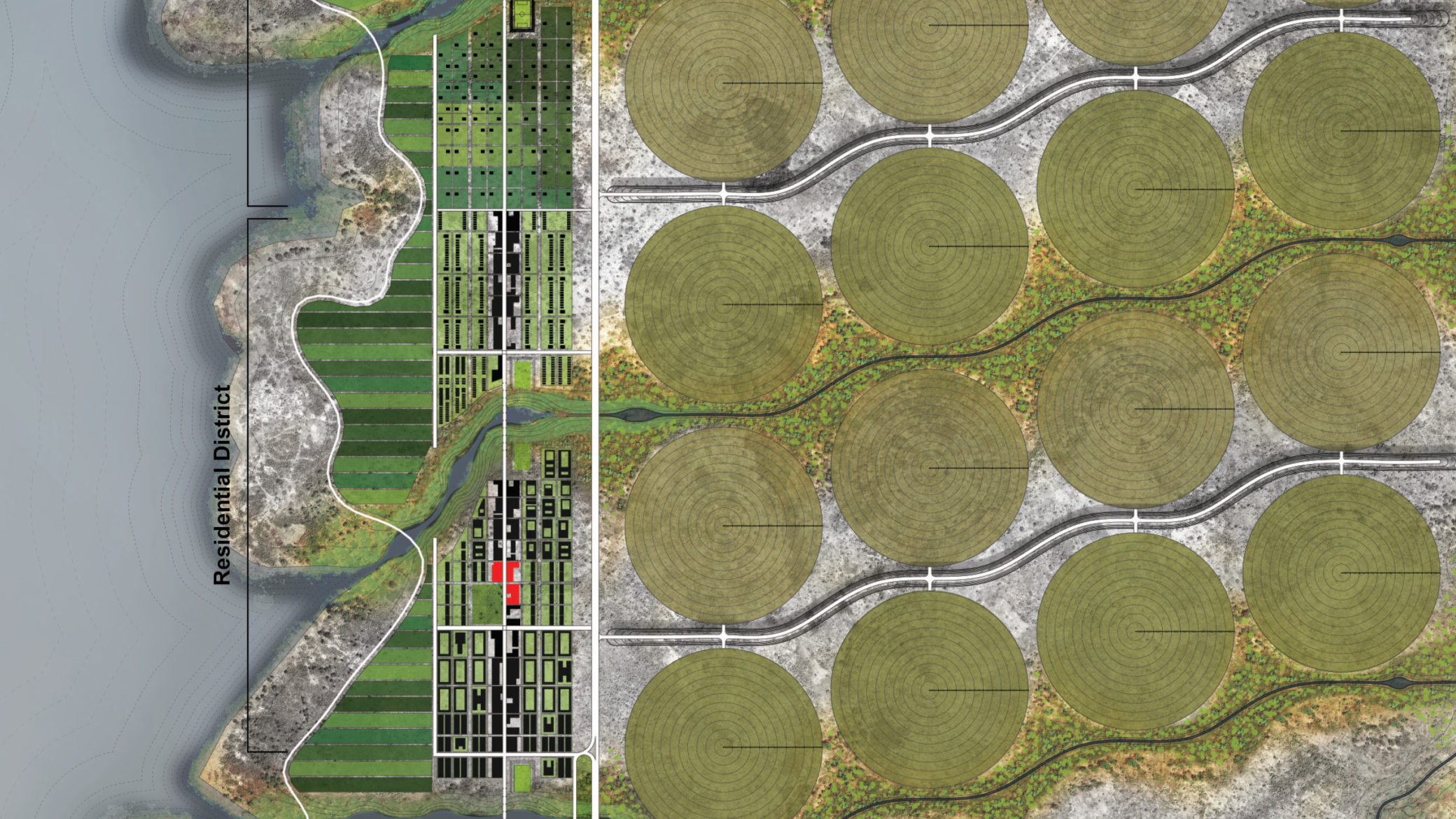Malawi Secondary Cities Plan: A Spatial Guide for Development
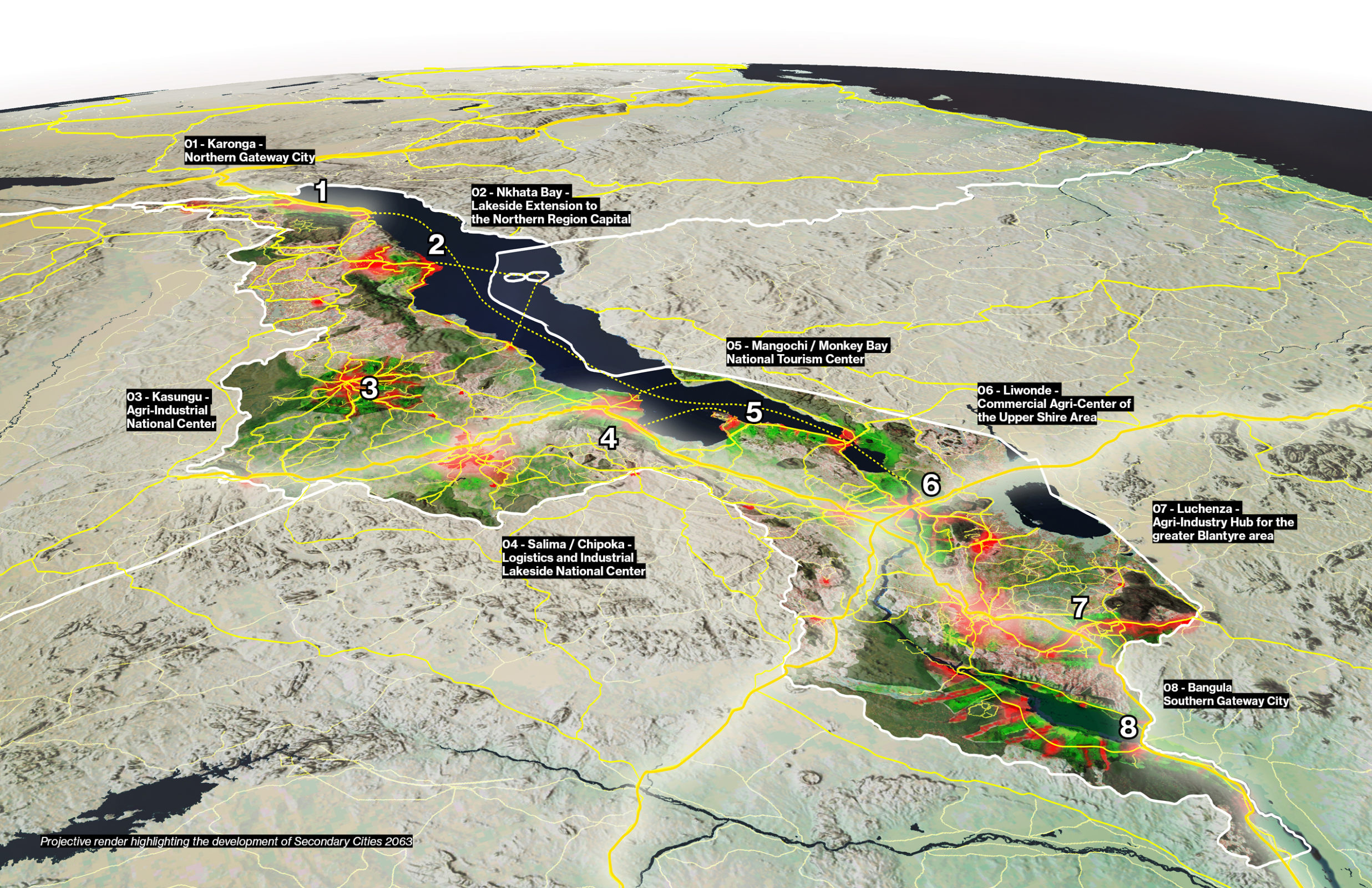
On May 31st 2022, the Malawi government, through the National Planning Commission (NPC), launched the Malawi Secondary Cities Plan (MSCP) through which eight cities will be developed across all regions of the country. MSCP is the result of a three-year long collaboration, technically led by ORG who joined forces with multiple stakeholders; from government officials to private organizations and institutions coming to support the ‘Malawi 2063’ Vision which includes long and medium-term development plans for the country.
MSCP presents as key goals:
1. Identify catalytic locations for strategic investments through a data driven analytical process guided by national agendas,
2. Establish a coordinated and comprehensive development promotion through strategic clustering of assets and projects,
3. Promote land use efficiency in locations where land is on high demand,
4. Diversify economic growth in rural areas through cross sectoral programs.
Background
Malawi has a population of over 18 million, with an average annual growth rate of 2.9% (NSO 2018). The population is forecasted to grow to over 30 million by 2035, and 45 million by 2050, nearly tripling the estimated 16 million from 2010 in a period of 40 years. Considering the available arable land at around 40% of its footprint, it is estimated that Malawi will face a critical point soon where family-owned farms (small holders) will not be able to provide for themselves. These facts and projections will only raise the level of current food insecurity Malawi faces, due to rain reliant agricultural practices and growing environmental risks of floods and droughts. As a result, Malawi experiences two pressing trends related to land use planning are 1) decrease of agricultural land sizes of rapidly growing populations of rural farmers, 2) increase of settlement land around existing urban centers, especially in areas where land is most suitable for agriculture.
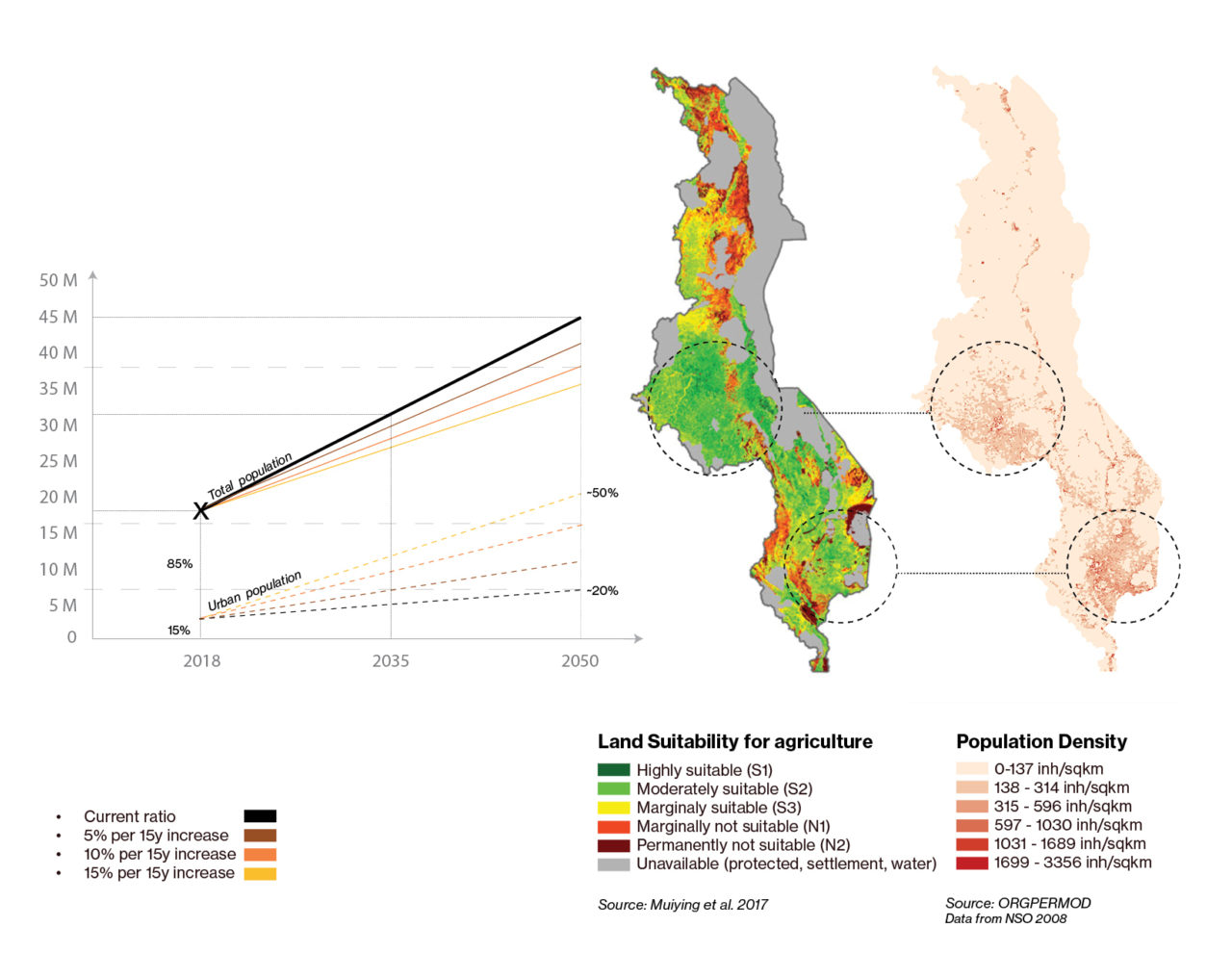
Proposal
Malawi requires a national shift towards new patterns of settlements, both urban and rural, that must be driven by land use efficiency, infrastructural connectivity, environmental sensitivity, and diverse economic productivity. For this transition to succeed, urban and rural areas require land and population management plans to public policies and investments in transportation, water, and energy infrastructure as well as private investments in commercial agri-business and industry. These policies and investments would catalyze a process of industrialization and modernization in strategic locations. In parallel, rural communities would require immense innovation to design replicable models of cooperative schemes connecting local villages and farmers to regional and global economies.
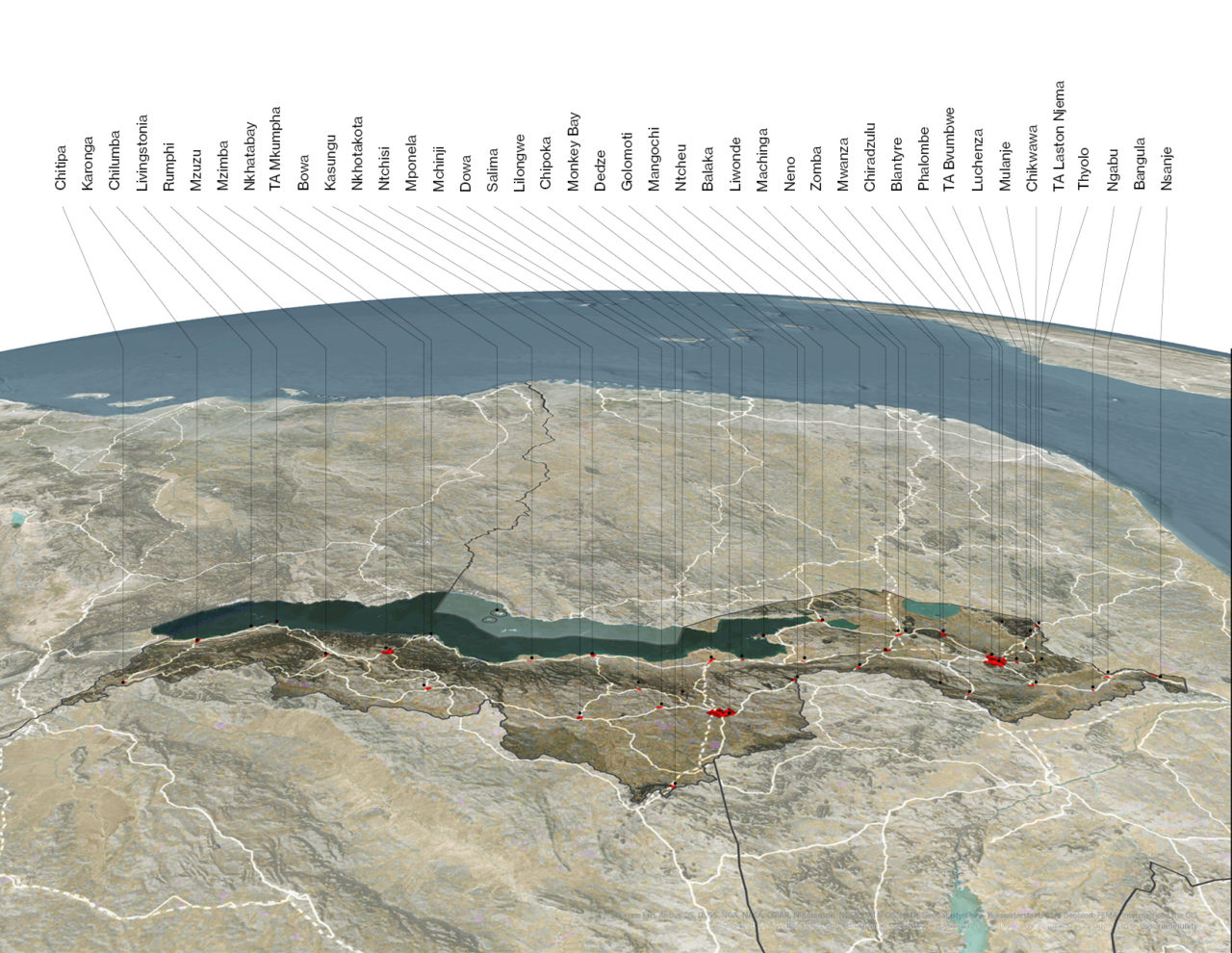
The case for secondary cities development in Malawi
Secondary cities are often overlooked in the context of development planning. Considering the common interpretations of the Urban / Rural binary, which suggests that people inhabit either cities or the countryside, secondary cities, or provincial cities, fall in between categories where realities are often more nuanced and complex. MSCP comes with an agenda to point to the critical role secondary cities should play, in establishing infrastructural, operational, and cultural feedback between both ends of the above described binary. Those cities, if planned well, could play multiple roles in respect to both the urban and the rural economies.
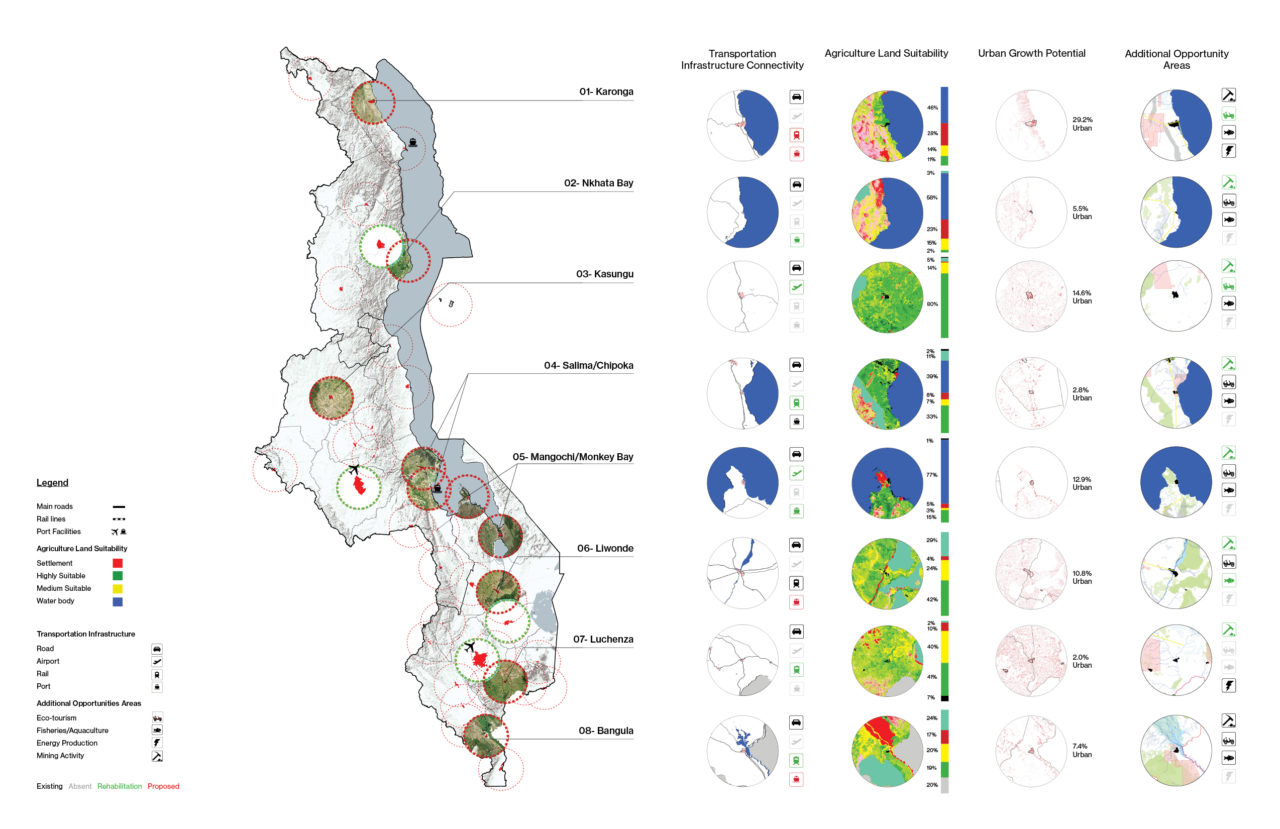
Multi-Scalar Spatial Analysis and Design
At the core of this analytical multi-scalar process of analysis is the application of multi-scalar design thinking. The plans presented in this plan aim to bridge scales of analysis and policy from national and regional scales, from watershed and district scale, down to the project level, and back again. This agenda of alignment between top-down and bottom-up realities, comes to the fore not only through the intentional positioning of investment clusters towards the development of secondary cities, but is further embedded in the actual implementation strategies of each cluster of investments, whether through phasing, financing, or partnership curation.
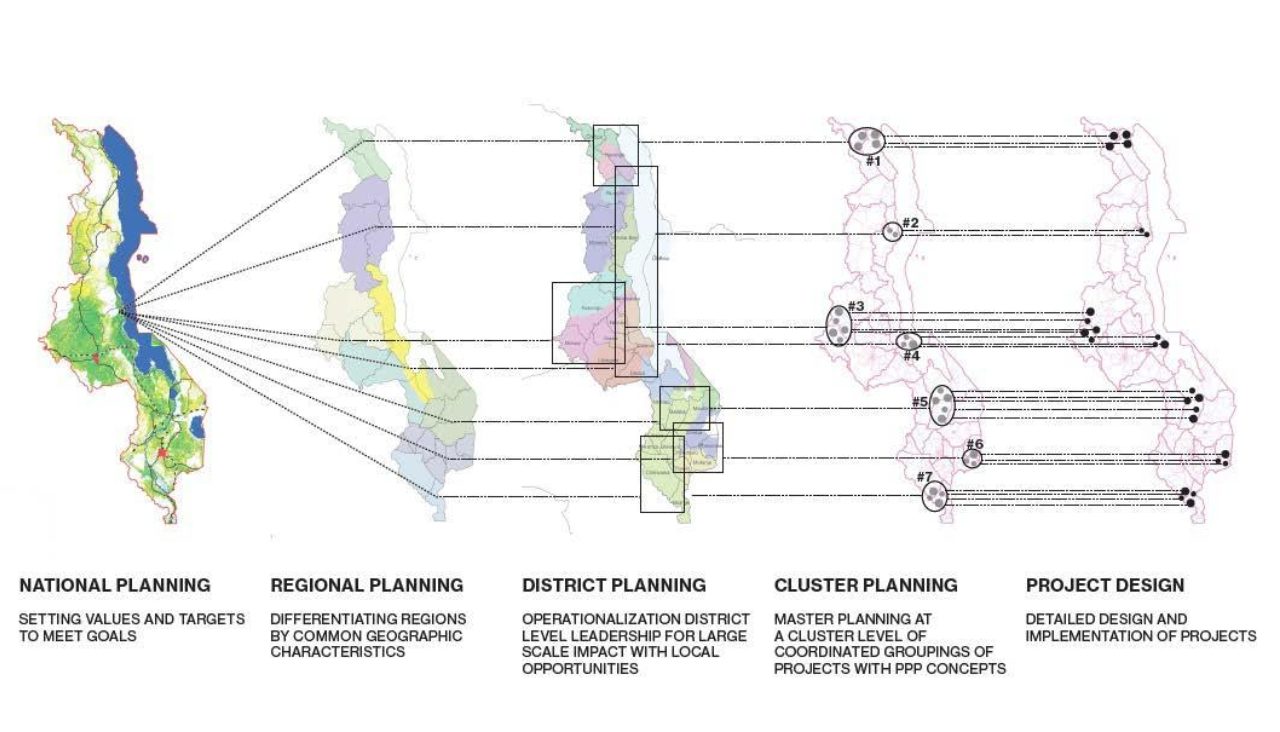
Prioritization for Development
In an environment where infrastructure offerings are severely lacking and budgets are highly constrained, it is imperative to maximize impact through project groupings and by designing infrastructure as multi-purpose provisions for a wide variety of beneficiaries and stakeholders. Such an agenda should be ideally implemented in a minimal set of locations, where groups of projects could emerge and build enough capacity and momentum to catalyze a local process of long-term development. Specifically, for the purpose of the master plans developed in those ‘intersections’ of opportunity, we propose investments in three key sectors, corresponding to the Malawi Vision 2063 pillars of: Urbanization, Agriculture, Industrialization. Under each sector, we envision several possible projects taking place, tailored into each locality as demand and context allows.
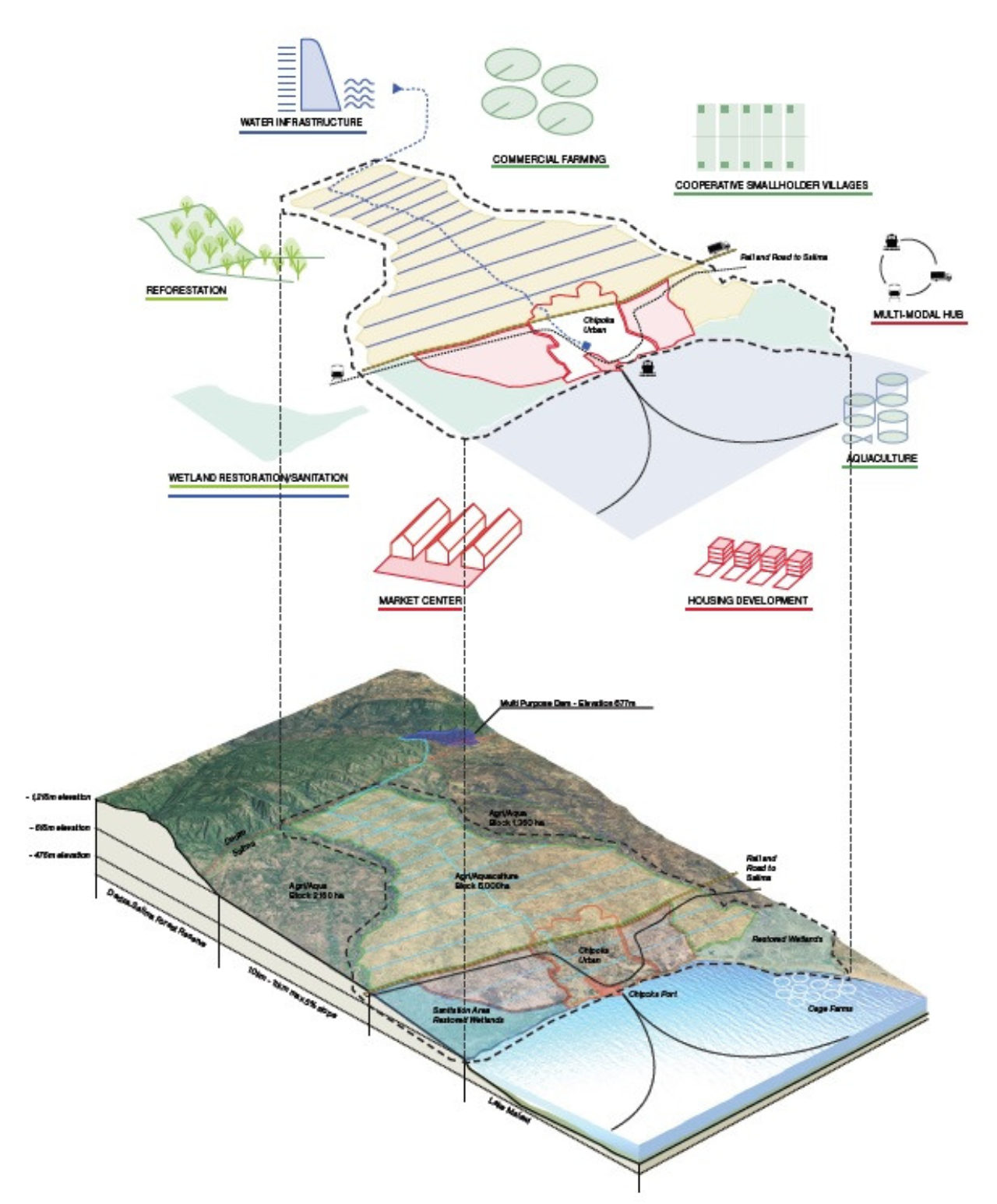
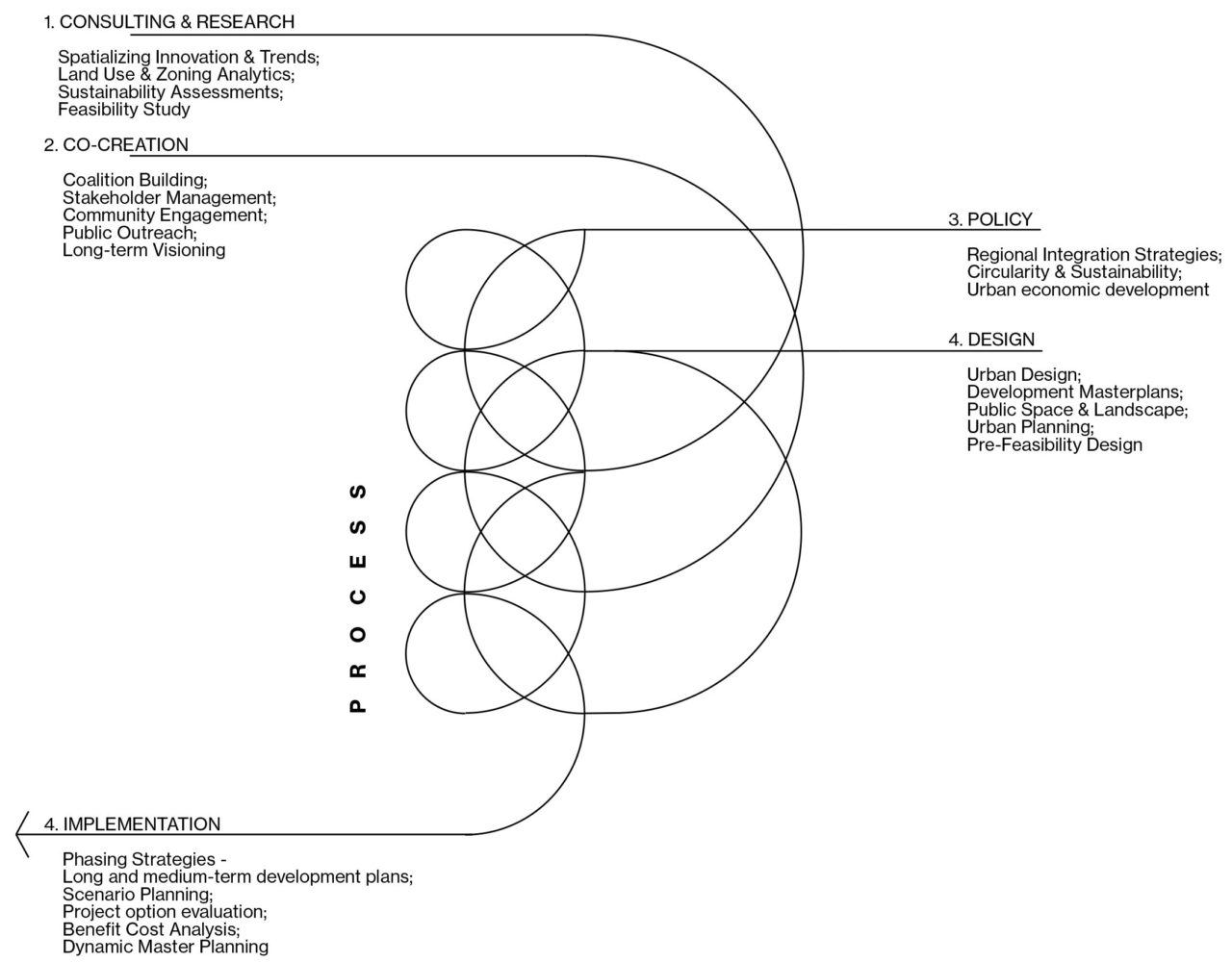
Location
Malawi
Year
2019 - 2022
Area
Multi Scalar (National, District, City, Project) across the entire country
Program
Infrastructure, Agricultural, Civic, Spatial Analysis and Planning
Collaborators
First Hectares Capital, Malawi National Planning Commission, MwAPATA Institute
Type
Research, Pre-Feasibility Design, Strategic Planning
Team
Alexander D’Hooghe, Kobi Ruthenberg, Garine Boghossian
Clients
The Foundation for a Smoke-Free World (FSFW), Agriculture Transformation Initiative (ATI), Michigan State University (MSU)


